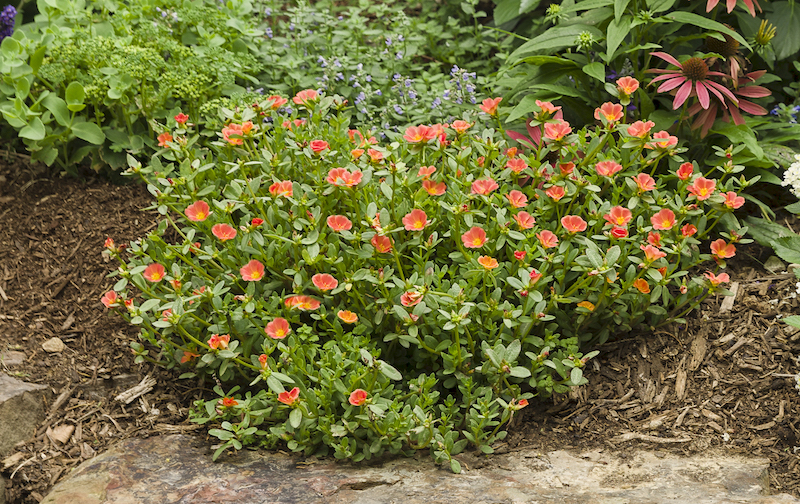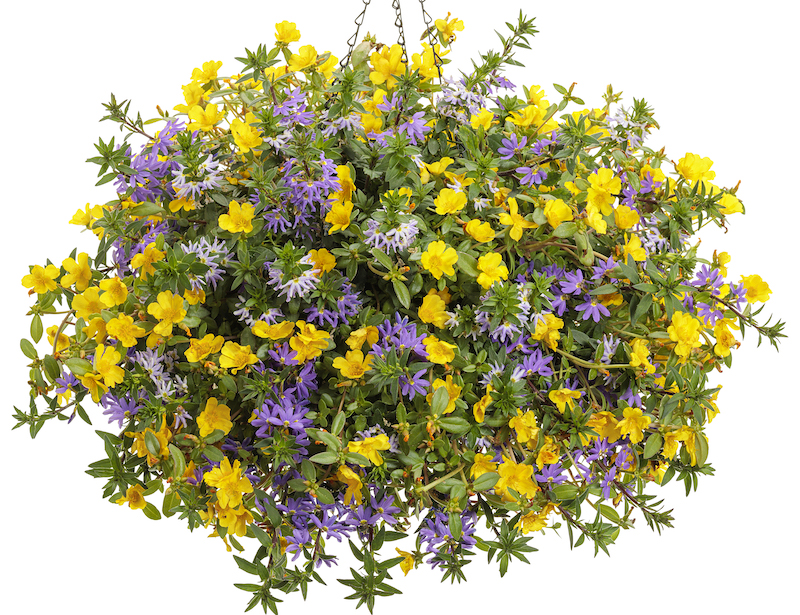Trailing stems and beautiful flowers make Purslane a welcome addition to landscape beds and hanging baskets, but this plant is not the best choice for yards accessible to pets. Purslane contains soluble calcium oxalate, making the plant toxic to dogs, cats, and other animals. Purslane is not harmful to people. The stems, leaves, and flowers are safe for humans to eat, and this plant has a long history of medicinal uses. Purslane is safe around children but not the best choice around pets.

Is Purslane Poisonous to Children?
Purslane is non-toxic and safe for human consumption. There is no need to worry if your young child touches or eats a Purslane plant's stems, leaves, or flowers. Purslane has medicinal uses and does not cause illness if ingested or handled by people. Ingesting Purslane is not dangerous or harmful for toddlers or curious kids.
Is Purslane Poisonous to Dogs?
Purslane is not dog friendly. All parts of Purslane contain soluble calcium oxalate, which is toxic to dogs. Puppies and mature dogs will experience weakness, drooling, tremors, kidney failure, and even death after eating Purslane.
Is Purslane Poisonous to Cats?
Purslane is toxic to cats. A cat or kitten that eats Purslane will become lethargic and drool excessively, and in extreme cases, the animal may experience kidney failure and death. Purslane contains soluble calcium oxalate, which is toxic to cats.
Is Purslane Poisonous to Other Animals?
All parts of Purslane are toxic to most animals, including horses, pigs, and other livestock. This flowering succulent contains soluble calcium oxalate that is poisonous to most animals. Purslane grows as a ground cover or is often featured in containers, so while it is not enticing, it may be accessible to animals.
Symptoms Of Purslane Poisoning
Purslane is not safe for pets and livestock. All parts of the plant are harmful if ingested by animals and can lead to death. Purslane is not toxic for humans. While this plant has medicinal uses, it is best to only eat Purslane under the guidance of someone informed about the plant and its uses. Always check with your doctor or veterinarian for guidance if you suspect Purslane poisoning.
Here are some common symptoms to look out for:
- Weakness
- Excessive drooling
- Tremors
- Kidney failure
- Death
Preventing Purslane Poisoning
Purslane is safe in your yard if you do not have pets or other animals. Protect your animals by opting for another plant in place or Purslane, or feature the plant in areas inaccessible to animals. A hanging basket will place Purslane out of reach for most cats. You can plant Purslane in the front yard if your pets only have access to the backyard. Fencing is another method to keep animals away from the plant.

Pet Poison Helpline
If something were to happen to your furry friend, and you suspect that they are suffering from Purslane poisoning, there is a poison control hotline to call for 24/7 vet advice. It is called the Pet Poison Hotline, and their phone number is (855) 764-7661.
Sources:
"Purslane." American Society for the Prevention of Cruelty to Animals. aspca.org
"Purslane." The University of Texas at El Paso. utep.edu
"Purslane, pusley." Guide to Poisonous Plants. poisonousplants.cvmbs.colostate.edu
 |
Author Alison Cotsonas - Published 04-20-2023 |
